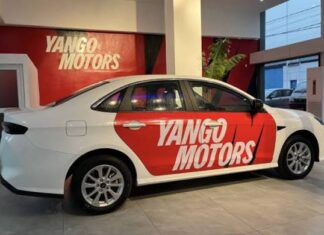When you purchase through links on our site, we may earn an affiliate commission. This doesn’t affect our editorial independence.
Mark Zuckerberg’s Meta struck a partnership deal with Oakley that nobody saw coming. The Oakley Meta HSTN AI Smart glasses hit markets June 20th, targeting athletes who’ve been burned by flimsy smart glasses before. This Oakley Meta HSTN collaboration puts Oakley’s battle-tested sport gear  experience against Meta’s artificial intelligence development, resulting in eyewear that might actually survive a decent workout.
experience against Meta’s artificial intelligence development, resulting in eyewear that might actually survive a decent workout.
Oakley Meta HSTN Construction Won’t Fall Apart
O-Matter frames use the same material found on $300 Oakley Meta HSTN AI Glasses that professional cyclists wear during Tour de France crashes. Getting IPX4 water-resistance means sweat won’t kill these things after twenty minutes of heavy lifting. Most tech companies treat water resistance like an afterthought—Oakley built their reputation on gear that works when conditions turn nasty timesofindia.indiatimes.com.
Unobtainium nose pads grip on Oakley Meta HSTN AI Glasses tighter when wet. Sounds like marketing garbage until you’ve had regular glasses slide off during burpees. Physics works differently when you’re actually moving around instead of sitting at a desk.
Temple design accommodates bike helmets, climbing helmets, and baseball caps without pressure points that cause headaches. Previous smart glasses assumed everyone wears them while scrolling social media indoors.
Meta’s AI Actually Does Something Useful in Oakley Meta HSTN AI Glasses
That 13-megapixel camera placement makes sense for once. Instead of weird side angles that capture your ear, it sits where your eyes actually look. Action cameras mounted on helmets or handlebars show everything except what athletes actually see during performance.
Video stabilization happens automatically without waiting for uploads and processing. SmartCapture voice commands work even when you’re gasping for air—something most voice recognition fails at completely. Try talking to Siri after running intervals and see what happens timesofindia.indiatimes.com.
Scene recognition calculates speed, distance, and elevation changes in real time. Heart rate monitors sync directly with footage overlays. No more guessing whether that hill climb was actually fast or just felt terrible.
Audio Design Solves Safety Problems
Open-ear speakers let runners hear cars approaching while still getting pace updates. Cyclists catch teammate calls during group rides. Rock climbers hear belayer warnings without removing earbuds that always fall out anyway.
Bluetooth 5.2 maintains connections during high-impact movements in Oakley Meta HSTN AI Glasses.
Older Bluetooth versions dropped signals whenever you jumped, sprinted, or moved quickly. Meta Wear OS uploads workout footage immediately instead of requiring manual transfers that everyone forgets to do.
Coaching apps deliver real-time feedback based on actual performance data rather than generic motivational messages that ignore what’s happening.
Oakley Meta HSTN Battery Lasts Through Long Training Days
10 hours covers sunrise trail runs through evening gym sessions without battery anxiety. Quick charging provides 2 hours of use after 15 minutes plugged in—useful for people who forget to charge devices overnight axios.com.
Standard Oakley Meta HSTN costs $399, roughly the same as high-end fitness trackers that do less. HSTN Elite versions cost $499 but include titanium frames and additional AI features that competitive athletes might actually use.
Pre-orders begin July 1st with retail availability starting in August. Dick’s Sporting Goods, REI, and online retailers will stock both models.
Competition Gets Serious for Smart Glasses Market
Google’s Android XR development team probably wasn’t expecting sports-specific competition this early. Apple’s rumored AR glasses will compete against products designed for actual athletic use rather than general consumer entertainment.
Oakley’s existing relationships with professional sports teams provide instant market credibility. Equipment managers trust brands that sponsor winning athletes rather than tech companies with no sports background axios.com.
Kylian Mbappé’s endorsement contract suggests serious marketing investment targeting professional and amateur athletes. College sports programs often copy professional equipment choices, creating potential cascade effects.
Assessment of Oakley Meta HSTN Potential Impact
These AI smart glasses address complaints that kept athletes away from wearable technology previously. Most smart glasses prioritized office workers and casual consumers over people who actually sweat during device use.
Secure fit, weather protection, and reasonable battery life were basic requirements that tech companies somehow missed. The Oakley Meta HSTN handles these fundamentals while adding features that enhance training and competition rather than creating distractions.
Professional athlete endorsements could accelerate adoption among competitive sports communities that influence equipment trends. Success in athletic markets might establish smart glasses as legitimate sports gear instead of experimental technology accessories.







